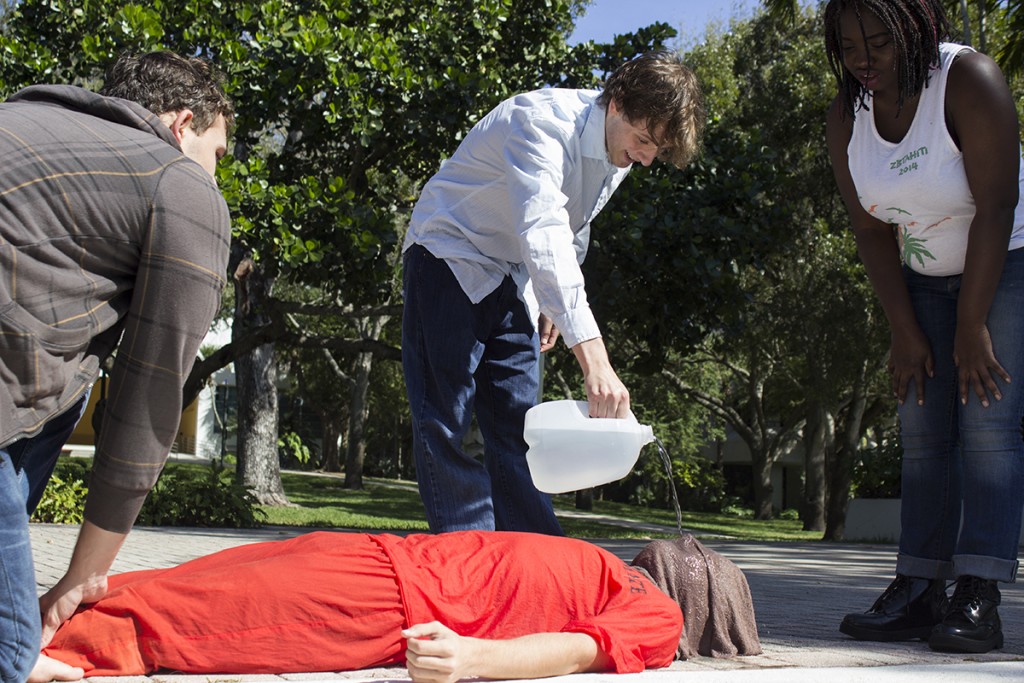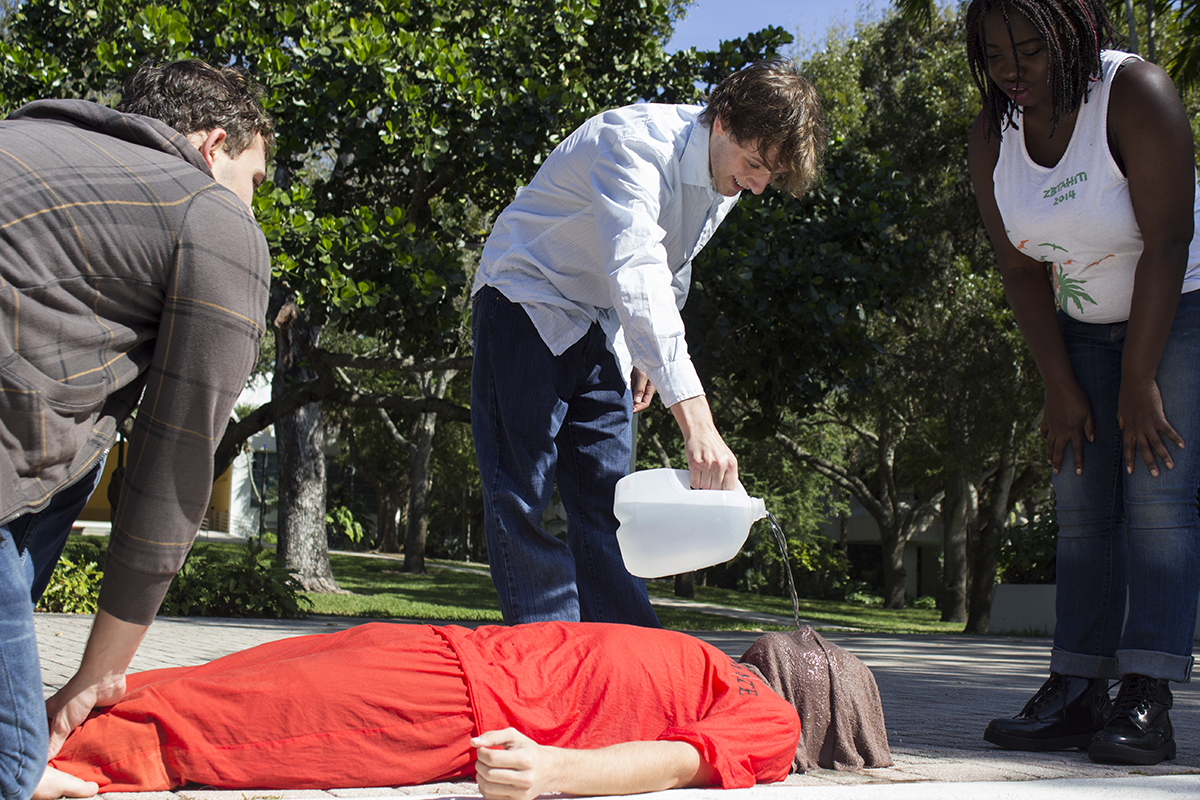
A student dressed in an orange jumpsuit lay on the ground voluntarily with a towel over his face. With the eyes of campus on him, another student poured a steady stream of water onto his face through the towel, creating the sensation of drowning, until he could take it no more and stripped the towel from his face, gasping for breath.
These students were among several who simulated waterboarding to protest the CIA’s use of it as an interrogation technique on prisoners. The demonstration took place Friday at noon on the Rock.
Jonathan Harrington, a junior on the pre-med track, was inspired to protest waterboarding at University of Miami to contribute to a global holiday dedicated to opposing torture. He approached friends about the idea, and a group formed to discuss the possibility on a grassroots level.
“There was definitely a sentiment all over campus,” Harrington said. “I began to find that people were as angry as I was, and so it sort of fell together on its own.”
However, Harrington said he experienced difficulties coordinating his effort with the university. To comply with the Rights and Responsibilities Handbook, he contacted the Dean of Students about the protest, but said he did not receive a reply. In the event of opposition from administration during the demonstration, he planned to present a copy of the email he sent.
“I printed out the email and I figured, if they come and try to start something, I have evidence that I tried to do this in the most legitimate way possible …” Harrington said.
If administration asked the protesters to disband, Harrington said he personally would not leave.
“… I was going to tell them ‘no, I would not [leave],’” he said. “I didn’t want to get my friends in trouble, so the whole thing was ‘Decide your own level of involvement or commitment.’ But I think a few of my friends would have been willing to stay and maybe face disciplinary action for the principle of it.”
Sophomore Zoheb Anjum, a biomedical engineering major, was among the group of protesters. He helped pour water on the “prisoners,” an experience he called “not as intense as you’d imagine” because of the communication between him and the students being water boarded.
“They were in full control of when the waterboarding would stop … so it really didn’t feel like I was waterboarding anyone, just pouring water on them,” he said.
Harrington said that the waterboarding performed in the protest gave students a “similar” experience to that of real prisoners, while being “nowhere near as bad.” Instead, the actions were exaggerated to create the appearance of real torture to those passing by.
Joey Miller, a junior political science major, contributed to the protest by creating and distributing informational pamphlets about the cause. Between live-action torture on The Rock and pictures of torture in the pamphlets, he said that visuals would impact spectators most.
“I think the fact that these people saw someone getting water boarded, and saw those pictures, makes it more personal,” Miller said. “You’re seeing real people being treated this way.”
Protesters challenged spectators to try being water boarded themselves. Only one student agreed.
Music blasted from a boombox throughout the demonstration. This simulated the effect of an interrogation technique used in conjunction with waterboarding, where loud or unpleasant music is played on a loop to break down prisoners mentally. Music used during the UM demonstration included Eminem, the Bee Gees, Elmo’s World and the Barney theme song.
Some protesters held signs. These signs cited statistics about the ineffectiveness of waterboarding as an interrogation technique, as well as the number of prisoners tortured by the CIA who have been found innocent.
Passersby interested in supporting the cause had the opportunity to add their signature to a sign, an idea conceived by Anjum to engage students.
“I wanted people to be, at least, aware of what was happening,” he said. “With news in general, people are aware of the news for a week or so, and then they never think of it again. I think that’s a big part of why bad things keep happening.”
Sophomore film student Nick Punales decided to sign because of the ineffectiveness of torture techniques in acquiring information.
“I signed it because, if it doesn’t work, it doesn’t work,” he said. “Regardless of what you think of the war, there have been studies that have proven that this method of torture is not only illegal but … we’re not getting any information from it. So it’s just sadistic in the end.”
Harrington said he hoped to drive a similar message home to spectators.
“I think on this campus – and really in this country in particular – there is a disturbing trend where people don’t really understand how bad this is, how big of a scale it was used on, and most importantly, how ineffective it is,” he said.






